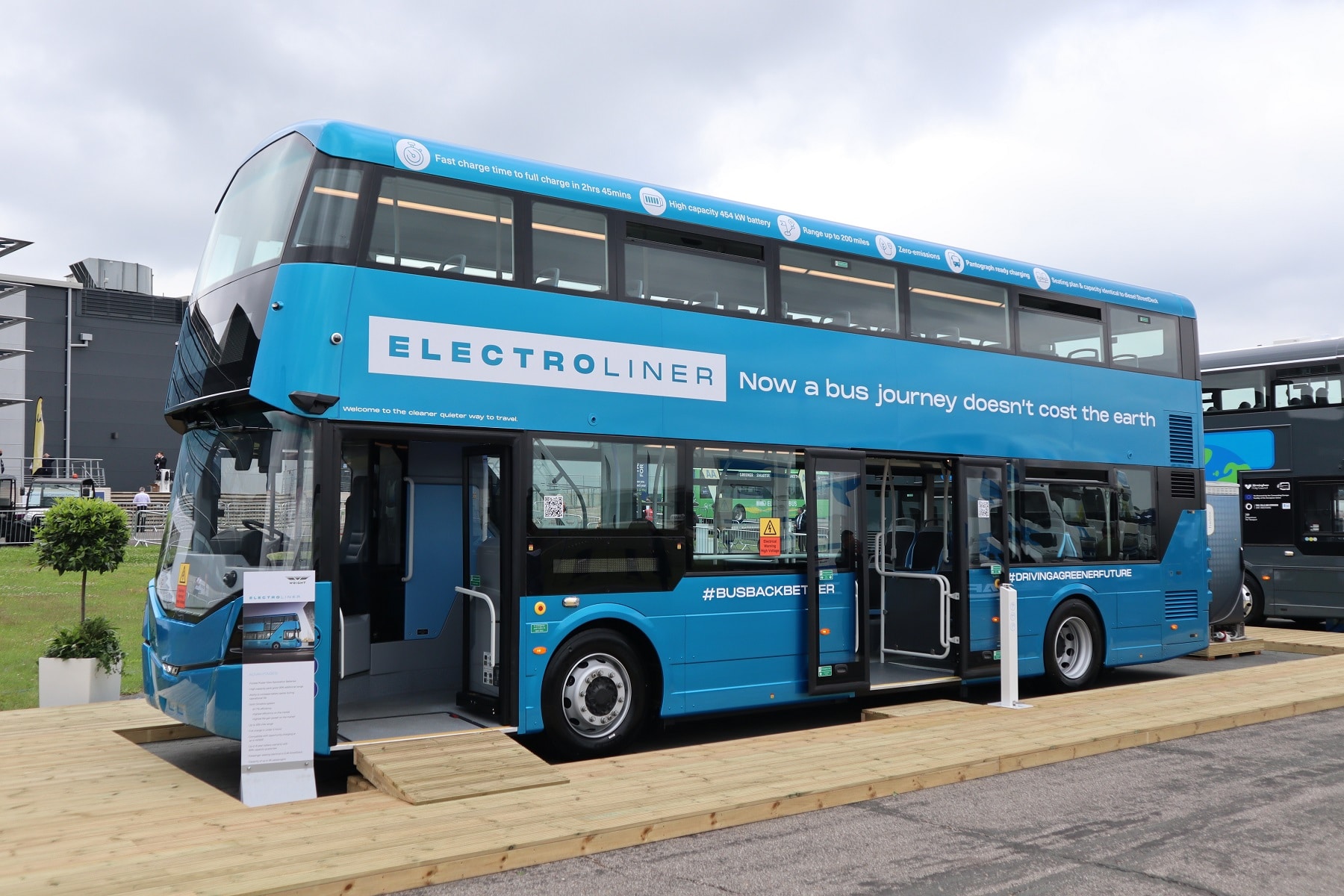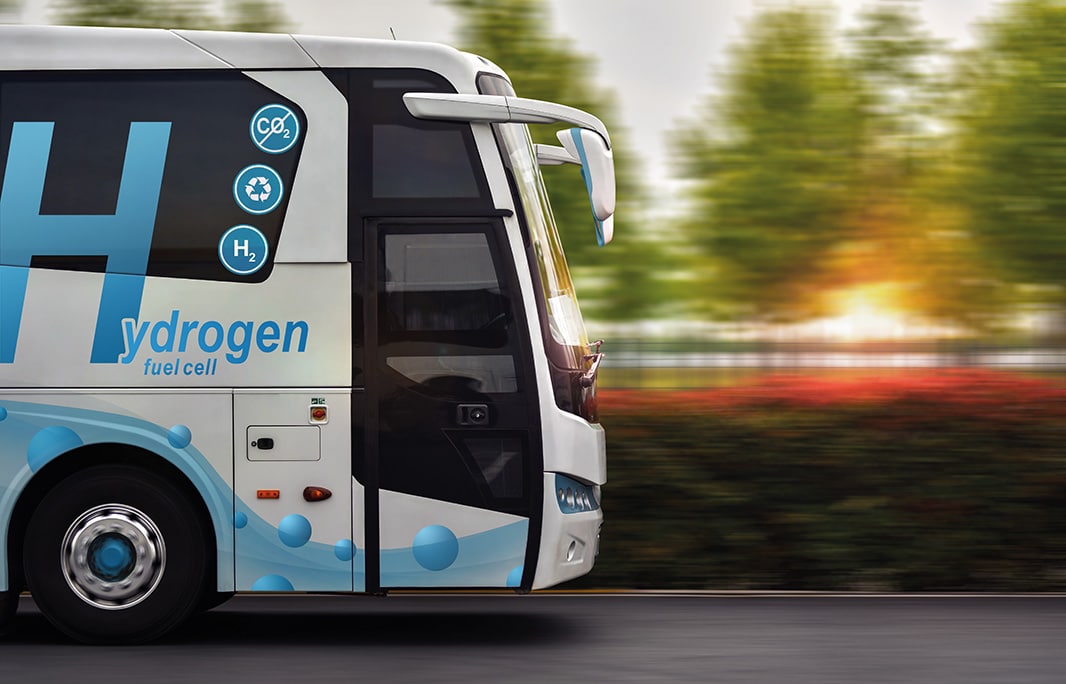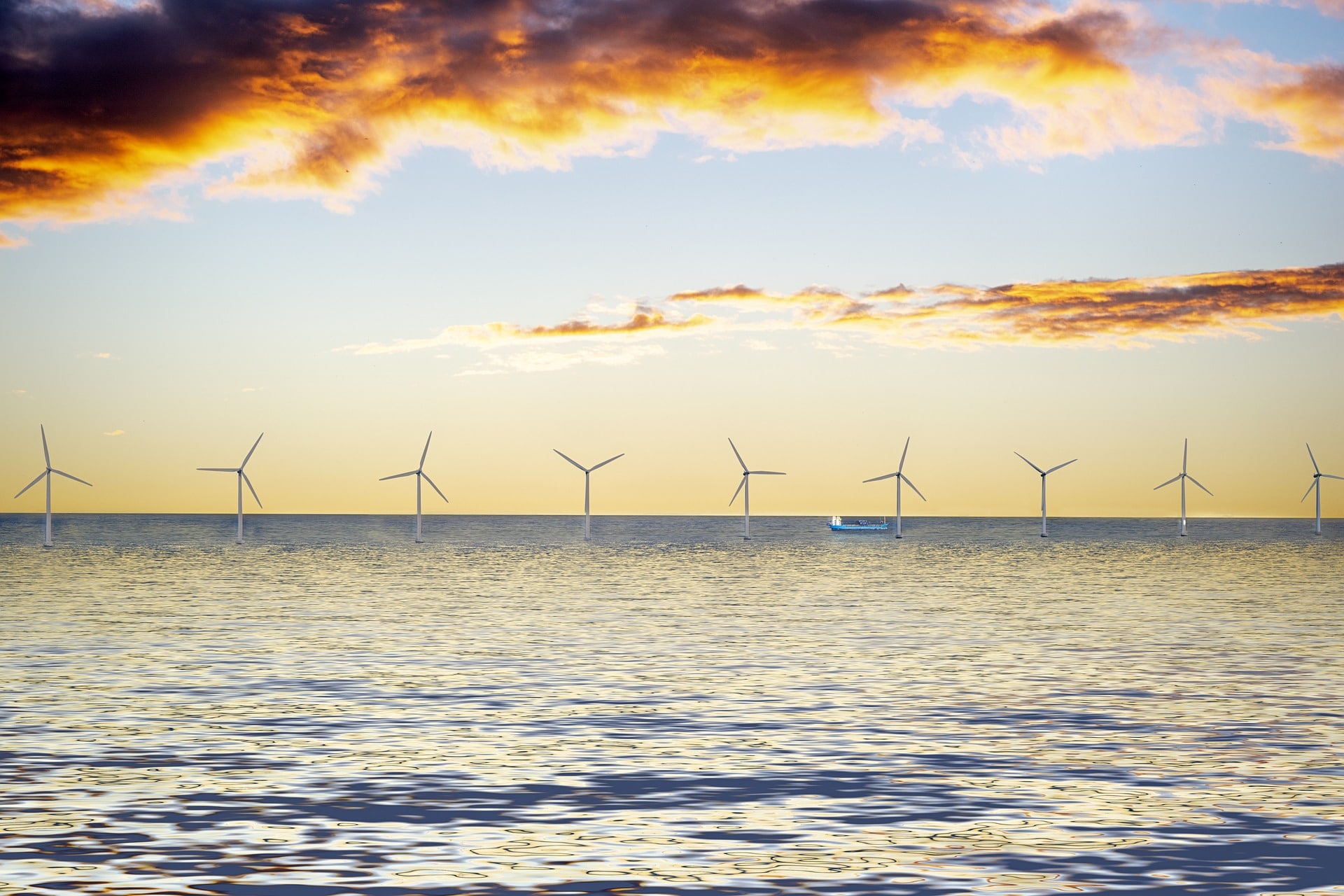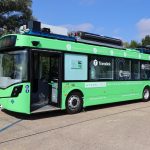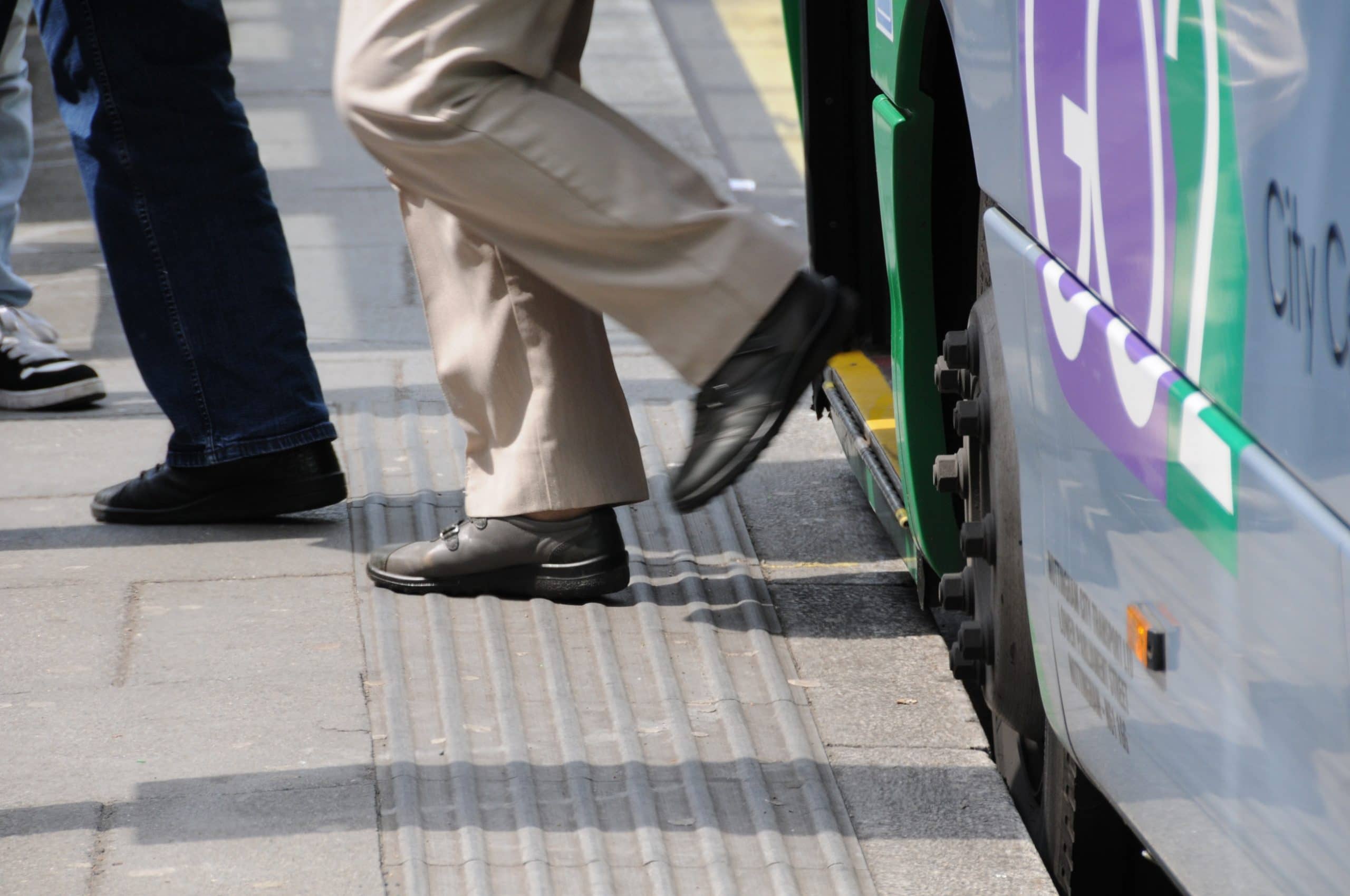Wrightbus took the industry by surprise in June when it unveiled the battery-electric StreetDeck Electroliner double-decker. The new model comes with a promised range of 200 miles when equipped with 454kW/h of energy storage, a maximum passenger capacity of 95, and what the manufacturer says will be a charging time of less than three hours.
The StreetDeck Electroliner complements diesel and hydrogen fuel cell-electric examples of Wrightbus’s integral double-deck product, with the latter now known as the Hydroliner. While it follows those two vehicles, the Electroliner is an adaptation of neither, says CEO Buta Atwal.
Instead, the newcomer has been built “from the chassis up” as a battery-electric bus, although some mechanical items – such as the suspension and the braking system – are shared. The battery-electric model also has around 80% body commonality with its diesel sister, now known as the StreetDeck Ultroliner.
“The StreetDeck Electroliner has been specifically designed for the battery-electric market and not developed from an existing model,” adds Buta. “There is a subtle difference.”
StreetDeck Electroliner: The new battery-electric DD standard?
Central to that application-specific work is the placement of the NMC batteries. Wrightbus offers either a three- or a four-string application on the StreetDeck Electroliner, delivering 340kW/h and 454kW/h, respectively. Some batteries are placed at the rear in what would be the engine compartment, and some are above the nearside front wheel. But the majority are under the floor.
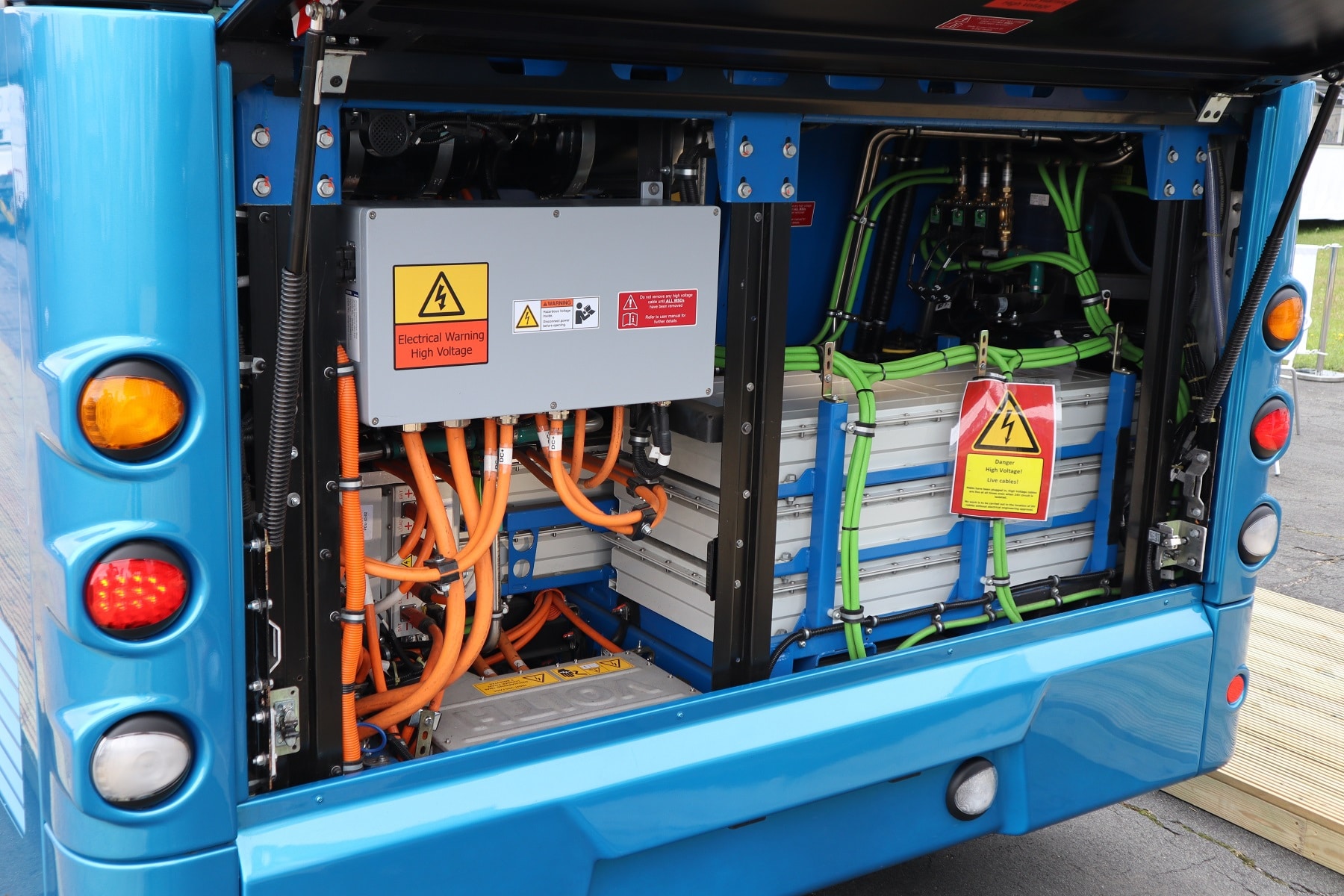
Thanks to that balancing work and a 19,500kg GVW, a standard-sized rear overhang is achieved.
As a result, the lower saloon is to the same layout as in a diesel StreetDeck, with back-to-back seats over the rear wheel arches, something that the manufacturer is particularly proud of.
The ZF AV 133 portal drive axle is used, enabling a flat floor between the wheel hubs.
Wrightbus is now for the first time under the ownership of Jo Bamford talking bullishly about its prospects for battery-electric power. It believes that the StreetDeck Electroliner and Hydroliner products offer the optimum combination of both zero-emission technologies to make a serious dent in the market.
The battery-electric StreetDeck variant has already generated attention from potential buyers and – tellingly – competitors. 80 will be delivered to Northern Ireland operator Translink as part of a wider £66m contract with Wrightbus.
Voith Electrical Drive System key to StreetDeck Electroliner
The choice between a three- or a four-string battery installation influences cost, weight and passenger capacity. But even with the maximum stored energy and to Transport for London specification, Wrightbus says that the StreetDeck Electroliner can carry 87 passengers. 95 is achievable with three-string batteries and to one-door layout.
It is also the first bus from a UK-based manufacturer to utilise the Voith Electrical Drive System. That unit promises much, and it has already been lauded by more than one vehicle OEM as being the most efficient product of its kind in the market. Voith claims that it is industry-leading in its potential for energy regeneration.
Wrightbus is keeping energy consumption figures for the StreetDeck Electroliner close to its chest. It says that variables in topography, loadings and driving style have too much influence to allow a reliable prediction to be made.
However, the manufacturer adds that the headline 200-mile range promise from a bus with four-string batteries is an average figure, and not a theoretical maximum.
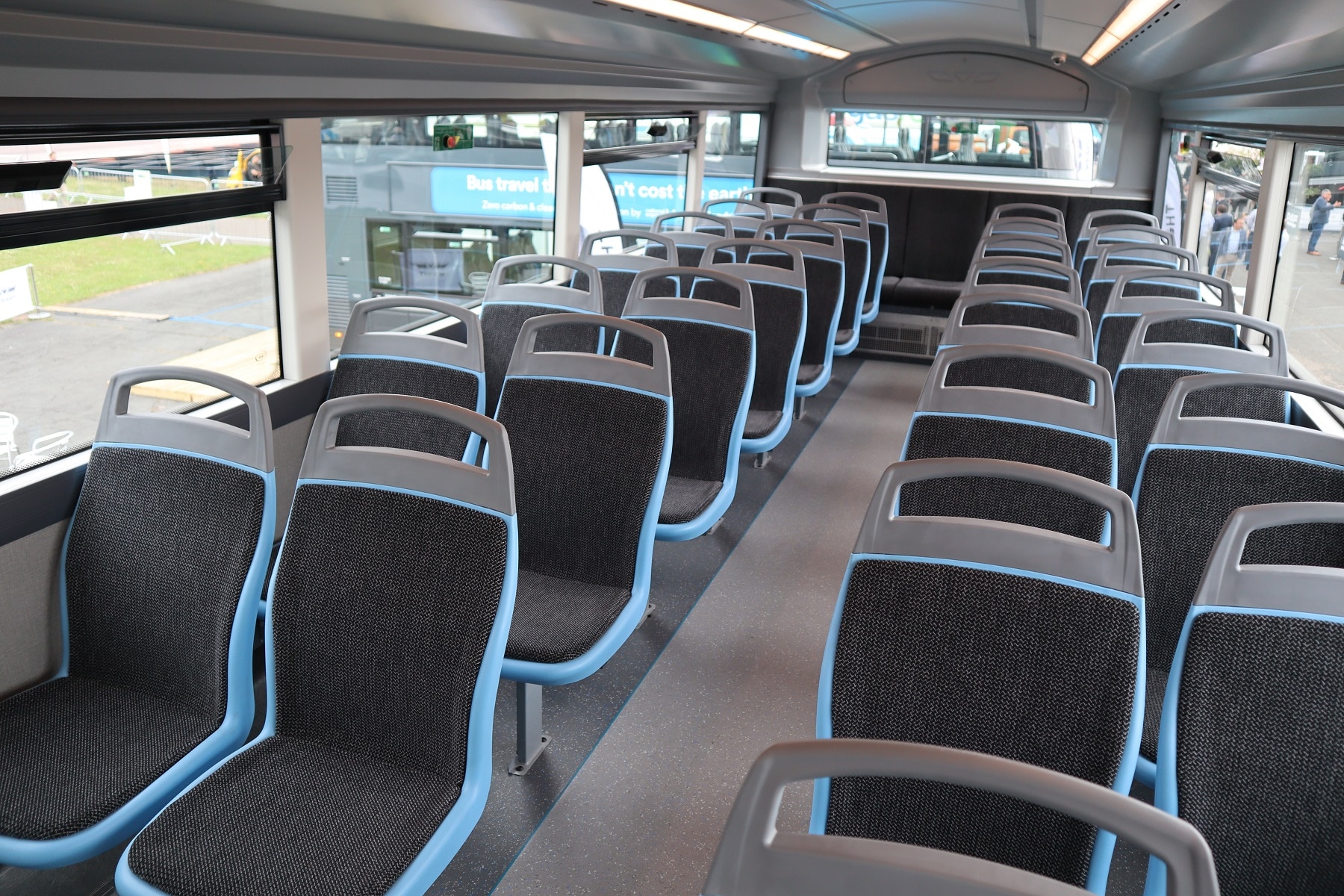
Further contributing to overall energy efficiency is the use of heat pump technology to both maintain batteries at a constant temperature and warm the saloon. The initial Electroliner also has a saloon air chill function.
Plug-in charging using a CCS2 connector gives a claimed battery replenishment time on the 454kW/h variant of two hours and 45min. Such a pace of energy transfer is made possible by the NMC battery technology, says Buta. Wrightbus also offers opportunity charging at up to 420kW via a gantry-mounted pantograph as an option.
Room for hydrogen and battery in market, says builder
The StreetDeck Electroliner complements the newly retitled StreetDeck Hydroliner in the Wrightbus zero-emission double-deck range. Although the 200-mile range of the former makes it a close competitor to the latter, Buta challenges any claim that the Electroliner could cannibalise sales from the Hydroliner. Instead, he believes that there is ample room for both in the market.
“We are driven by customers, not technology. It is important that we give buyers a choice. We believe that we now have the best battery-electric double-decker alongside the best hydrogen fuel cell-electric double-decker.”
That sentiment is echoed by Wrightbus Executive Chairman Jo Bamford. He purchased the business out of administration in 2019. COVID-19 apart, he says that the transition from the previous regime is progressing better than first hoped.
Investment in the production facility and staff continues, and the manufacturer will extend its battery- and hydrogen fuel cell-electric powertrains to single-deckers in due course. “We have invested millions of pounds in [zero-emission] buses already. We are not going to stop at that,” says Buta. Indication, indeed, that the revival of Wrightbus is gathering pace.




